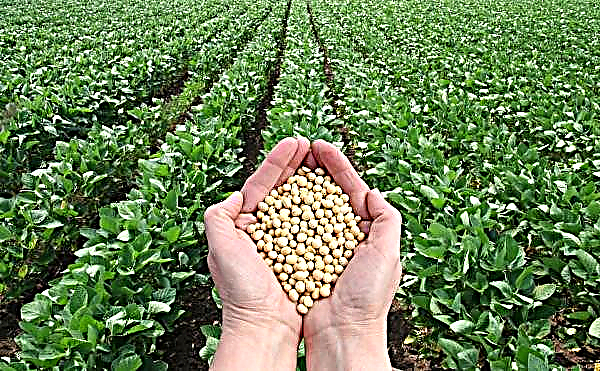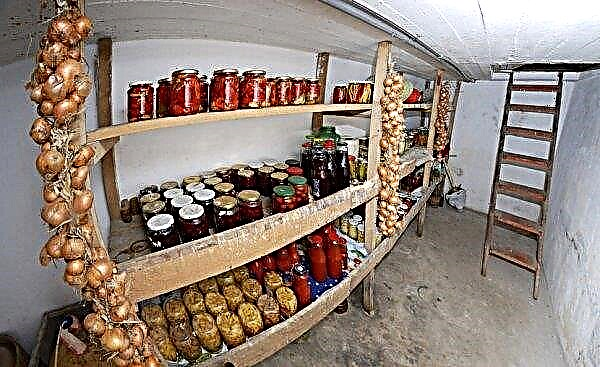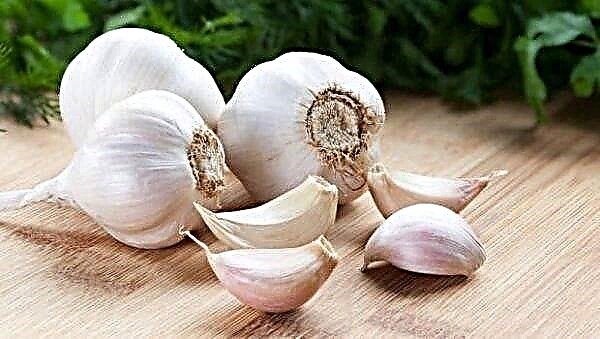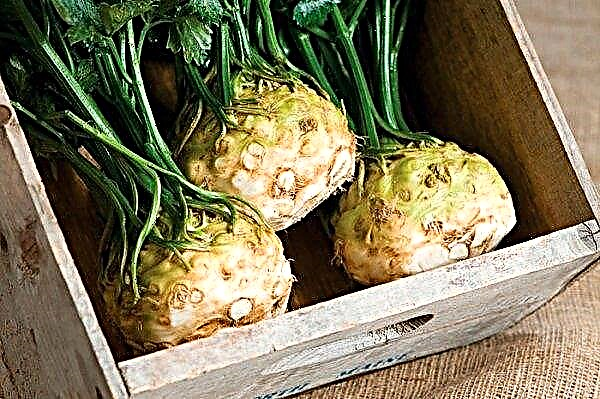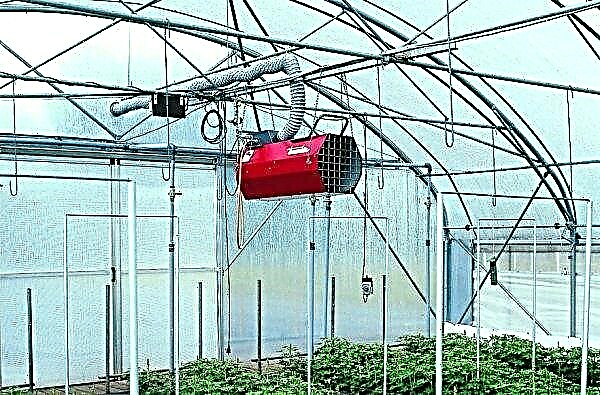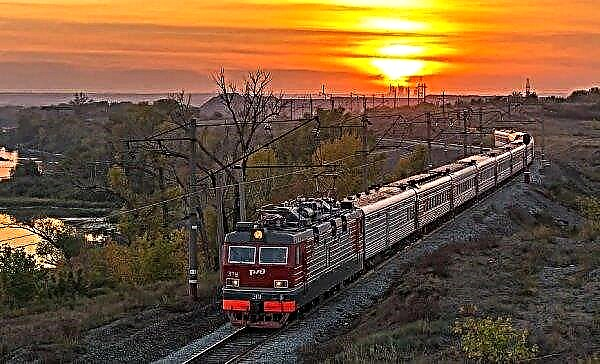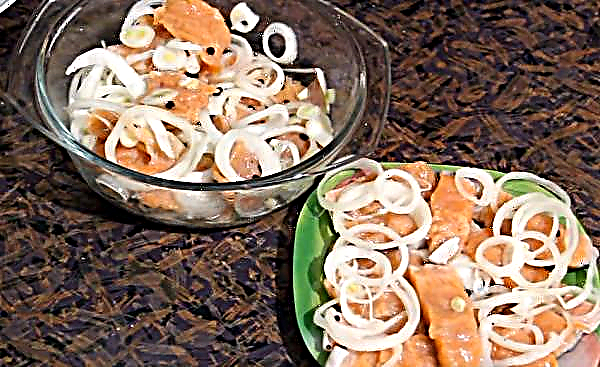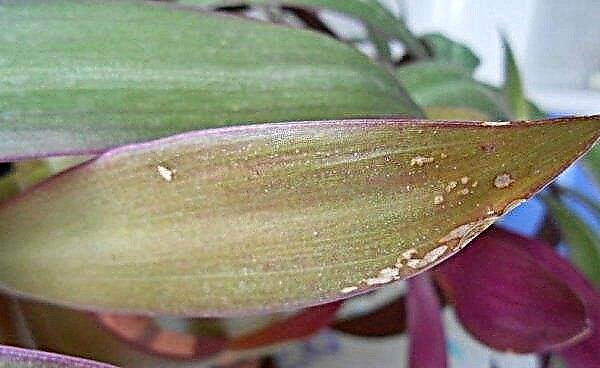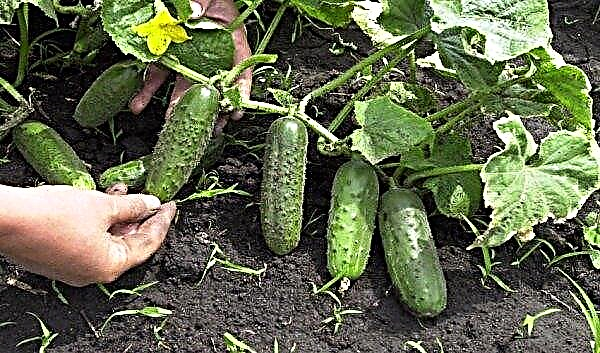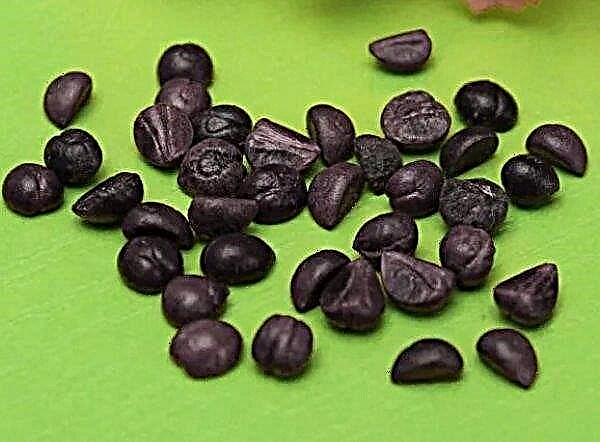The horse is considered one of the most noble animals, which for its appearance and manners have long earned the respect of man. Since ancient times they have been performing a wide variety of work - from transporting heavy goods to participating in competitions. Hanoverian horse belongs to the second type of horses, we will tell you more about it in this article.
History reference
This is a half-breed horse breed obtained in 1735 by the then Hanoverian Prince George II, who later became king of England. The crossing of ordinary strong horses with Arab and Trakenen horses, as well as with purebred horses led to the formation of a new high-quality breed.
Given not the noblest origin of the source material, German breeders managed to breed an excellent breed that could win in the most prestigious competitions.
Did you know? The coat of arms of the German state of Lower Saxony contains an image of a white horse, very similar to the representative of the Hanover breed. As it turned out, white "Hanover" existed even before the date of their official removal. Presumably, these animals were brought from Denmark.
Appearance and physique
The exterior of the breed suggests excellent features of the English thoroughbred horse.
External signs of the Hanoverian horse are as follows:
- head - medium with classic clear features, a straight nose and large expressive eyes;
- neck - long, muscular;
- shoulders - medium, developed;
- chest - vertically rectangular;
- withers - graceful, pronounced;
- body - muscular, powerful;
- legs are medium, developed;
- the tail is thick, long;
- weight - under good conditions - up to 600 kg;
- height at the withers - 160–170 cm;
- body length - slightly more than the length at the withers;
- color - from black to gray, is uniform, allowing only small white spots.
Manners and habits
Balance and calm are the main indicators of the nature of the representatives of this breed. A calm attitude to the surrounding situation makes the "Hannover" excellent sports horses.
Excellent motor qualities distinguish these horses during the competition. They show intelligence and impressiveness, which attracts the attention of spectators and deserves the favor of the judges.Important! For breeding, only those individuals are taken that are checked by specialists and found to be calm, but in the presence of a solid character. These animals are persistent, hardy and at the same time patient, therefore they lend themselves perfectly to training.
Using
Representatives of the breed are massively and not without success used in equestrian sports. Mild temper and perseverance help to achieve the highest goals. Many "Hanover" became champions and winners of the Olympics and world championships.
These horses are good for dressage, because they are obedient and even delve into the process of competition, demonstrate grace, become artistic. With the right training and education, they can become one with the rider and conquer the public and the jury. An even more promising equestrian sport for Hanoverian horses is show jumping. They respond perfectly to jockey teams, their physiological data make it possible to overcome any obstacles, and they themselves enjoy this sport.
An even more promising equestrian sport for Hanoverian horses is show jumping. They respond perfectly to jockey teams, their physiological data make it possible to overcome any obstacles, and they themselves enjoy this sport.
A walk on the "Hanover" also leaves a lasting impression. Many affluent people have representatives of this breed for ordinary walks at their leisure. The smooth ride and mannerism of the horse allows you to enjoy the ride, and not waste your strength and nerves to restrain zeal.
Did you know? Horses are very intelligent animals, capable of training. Some of them can independently understand how to open the doors of a stable or aviary, and release the rest into the wild.
Advantages and disadvantages
- ] The advantages of the breed are unique:
- calm behavior;
- obedience;
- grace;
- high learning ability;
- the emergence of sports excitement;
- wonderful external data.
The disadvantages can only be found in the impossibility of use in the household at all costs of maintenance. A rural “Savraska” or a draft horse cannot be made out of it. And the cost of these horses "bites" - it will be necessary to lay out at least 3 thousand dollars for one individual.
We recommend reading more about horse ammunition:
Maintenance and care
Caring for any pet is a lot of trouble. Keeping a horse will seriously hit your pocket and take a lot of time and effort. Only true lovers of this beautiful animal are capable of this.
Stable
In principle, you can solve all the problems of renting a place in someone else's stable. You can even hire a special person who will perform all operations to care for the animal instead of the owner. However, this will deprive them of the pleasure of independently looking after and caring for the horse in their own stable, so wealthy people often equip the stable in their own household.

Important elements in the room are:
- stall;
- feeding troughs;
- drinkers;
- litter;
- climatic conditions (temperature, lighting, etc.).
Drinking bowl it can be either automatic or manual - in the first case, the water level in the drinking system is constantly kept, in the second - the water is brought in the bucket in the old way or filled in from hoses.
Feeder settles down in the form of a tray where the feed is poured. You can divide it into two compartments to pamper your pet with some variety of food. Trays are made of wood, plastic or galvanized iron.
Flooring it is best to lay from large sawdust of wood production - sawmill waste. Small sawdust can be accidentally inhaled by animals, and furniture waste contains harmful chemical compounds. The initial layer is made 10 cm thick, and then every two days you need to pour an additional portion - a bag will be enough.
Temperature in the stable in winter should be slightly higher than 0 ° C. A small negative temperature is tolerated by horses only in the absence of sudden changes or drafts. But these are extreme conditions of detention. A normal owner will provide his pets with heating up to + 23 ° C.Important! Flooring can be made from small paper or peat. But straw should be avoided - it can become a source of contagion, and in the pre-light state it will cause discomfort to the animal.
Lighting can be natural or artificial. The necessary standard of daylight in the stable is calculated according to a simple formula: the ratio of the area of the windows to the floor area should be 1: 10–1: 12, in the southern regions - 1: 12–1: 15. Artificial illumination - 150-200 lux in even light.
Ventilation Indoor is necessary, because the vital products of even such a noble animal have a persistent unpleasant odor. Exhaust ventilation will ensure its removal outside the stable.
Care
Proper care will give the animal a healthy appearance, satiety and well-being. In the wild, horses are completely unpretentious, but their domesticated relatives have their own content requirements.

Manure and bedding. Sewage must be removed daily from the stable. To do this, a rake and a shovel are used, with which the litter is sifted and excrement is collected. The litter itself is updated daily, every two months it is completely changed, and the room is cleaned and disinfected.
Feeding troughs and drinking bowls. Pathogens may appear in these containers, as the residues of feed and water decay and bloom. To prevent this from happening, the inventory is cleaned daily and weekly disinfected with special solutions or at least a weak solution of potassium permanganate.
Wool. For the Hanover breed, grooming consists of daily cleaning. A horse that has been walking in the aviary all day does not require special procedures; it is lightly wiped with a soft brush. If on this day there were competitions or the pet was in the stall, the wool is gently wiped with brushes and scratchers for half an hour.
Hooves and legs. A daily inspection of the hooves should be the rule, as any pebble, glass shard or other foreign object can cause serious injury. Feet also need to be checked for possible bruises, cuts, sprains.Important! The animal likes the procedure of brushing wool; at such moments it is completely open to communication with humans.
Teeth. Every six months, horses undergo preventive dental examinations. If the pet began to eat poorly, and food does not bring him pleasure, it may well be that there were problems in the oral cavity. Grinding teeth with a rasp or removing them is performed under general anesthesia by an experienced veterinarian.
Proper feeding
Since horses have slow digestion, they need to be fed according to a specific pattern. First, roughage is given - hay (meadow, steppe, cereal, bean or a mixture thereof). After 30-60 minutes, grain (oats or barley) is poured out. Oats and barley are enough for a pet's menu.

But it can be varied with other types of grain or legumes:
- corn - 1/4 of the diet in normal conditions or full before dressage;
- rye - up to 4 kg per day;
- wheat - up to 4 kg per day;
- millet - up to 2-3 kg per day;
- legumes - up to 2 kg per day.
Horses enjoy eating vegetables and fruits - beets, potatoes, carrots, swede, apples, watermelons, banana peels. Everything should be clean and fresh.
The feeding technique is as follows:
- breakfast (at about 6 a.m.);
- lunch (noon);
- dinner (at 18 hours).
Evening feeding should be the most plentiful so that the animal is not too hungry until the morning. After each meal, the pet should rest for two hours. Water is given at any time before, during and after feeding.
For better assimilation of food, it is worth watering the horse in a pause between meals of roughage and grain feed. Water should have a temperature of +8 ... + 16 ° C. An animal heated after hard work or competition can be watered only after it has cooled down.
It is necessary to develop a systematic approach to feeding and drinking “Hanover”. This will have a good effect on his digestion and character. But having accustomed to one schedule, it is not necessary to break the established way.
Hannover horse is not only an ideal athlete, but also a calm animal with a stable psyche. Such a horse will conquer the owner’s heart forever and will be not only a decoration of the stable, but also a friend for many years.

